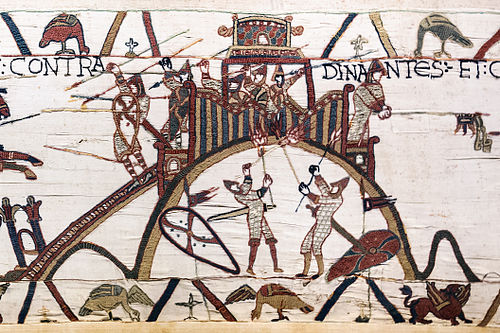 First edition | |
| Author | Julian Rathbone |
|---|---|
| Language | English |
| Genre | Historical novel |
| Publisher | Little, Brown |
Publication date | 1997 |
| Publication place | United Kingdom |
| Media type | Print (hardback & paperback) |
| Pages | 381 pp |
| ISBN | 0-316-64139-1 |
| OCLC | 38427719 |
This article consists almost entirely of a plot summary .(March 2024) |
The Last English King (1997) is a historical novel by English writer Julian Rathbone. [1] [2] [3] [4] The novel covers the time of the Battle of Hastings. It revolves around Walt Edwinson, a housecarl of Harold Godwinson, the last Anglo-Saxon king of England.
